--- Emp# and Course# are PK
Note PKs (primary keys) are irrelevant to normalization. CKs (candidate keys) matter.
{employee#, course#} is not a CK of R2 since it does not determine date. The only CK is {employee#, course#, date}.
They are in 3NF.
R2 isn't in 3NF or 2NF, since non-prime column course_name is partially functionally dependent on a CK, since it is functionally dependent on {course#}, a proper/smaller subset of a CK. (This would be so even if the CK were {employee#, course#} as you claimed.) Lossless decomposition leads to 3NF tables on {course#, course_title} and {employee#, course#, date}.
Course# -> Course_title
This does not make sense re the original table since those are not columns of it. It does make sense to say that a course has exactly one title. That does mean that in a table with those columns with their obvious meanings, {course#} -> {course_title}. It also means that the original table is subject to a certain constraint; it just isn't a FD (functional dependency) constraint.
it is written that if there are multi-valued attributes then I should form a new table and propagate the Primary key of the table (Employee#) into the new Table and them both the composite PK. [comment by you]
In the original table each training value is a set of records. To get rid of a set column that isn't part of a CK we can split off a table using columns of some CK to get a new table with a row for each pairing of an original table CK subrow value with a set element. Here the set elements are records. After we get rid of the set column we can get rid of the record column. To get rid of a record column we replace it by columns for its fields. Now applying that gives your R2.
Originally getting rid of table-valued columns was called "normalization" by Codd. Then by "further normalization" Codd meant lossless decomposition to higher normal forms. Sometimes getting rid of set-valued or record-valued columns is called "normalization". But it's not. It's just improving the design. Sometimes "normalization" is used to mean lossless decomposition to higher normal forms regardless of any table-valued columns.
I created a different table R2 for that, and R2 is already in 2NF [comment by you]
Every time you replace a table by others you must determine the new tables' FDs, CKs & NFs. If you losslessly decompose to a higher NF then you know that each component's highest NF is higher than the original's. But here you are doing different transformations--getting rid of set and record columns. Here R2's CK and an FD involving courses means it isn't in 2NF even though the original was. The non-FD constraint involving courses in the original relation has caused a certain FD to hold in R2.
I feel the date should have been a part of some FD. [comment by you]
Maybe you are trying to say that you would expect that a given employee could only take a given course in one year. But that is not what we have been told.

 Where am I going wrong? Any help would be really appreciated.
Where am I going wrong? Any help would be really appreciated.